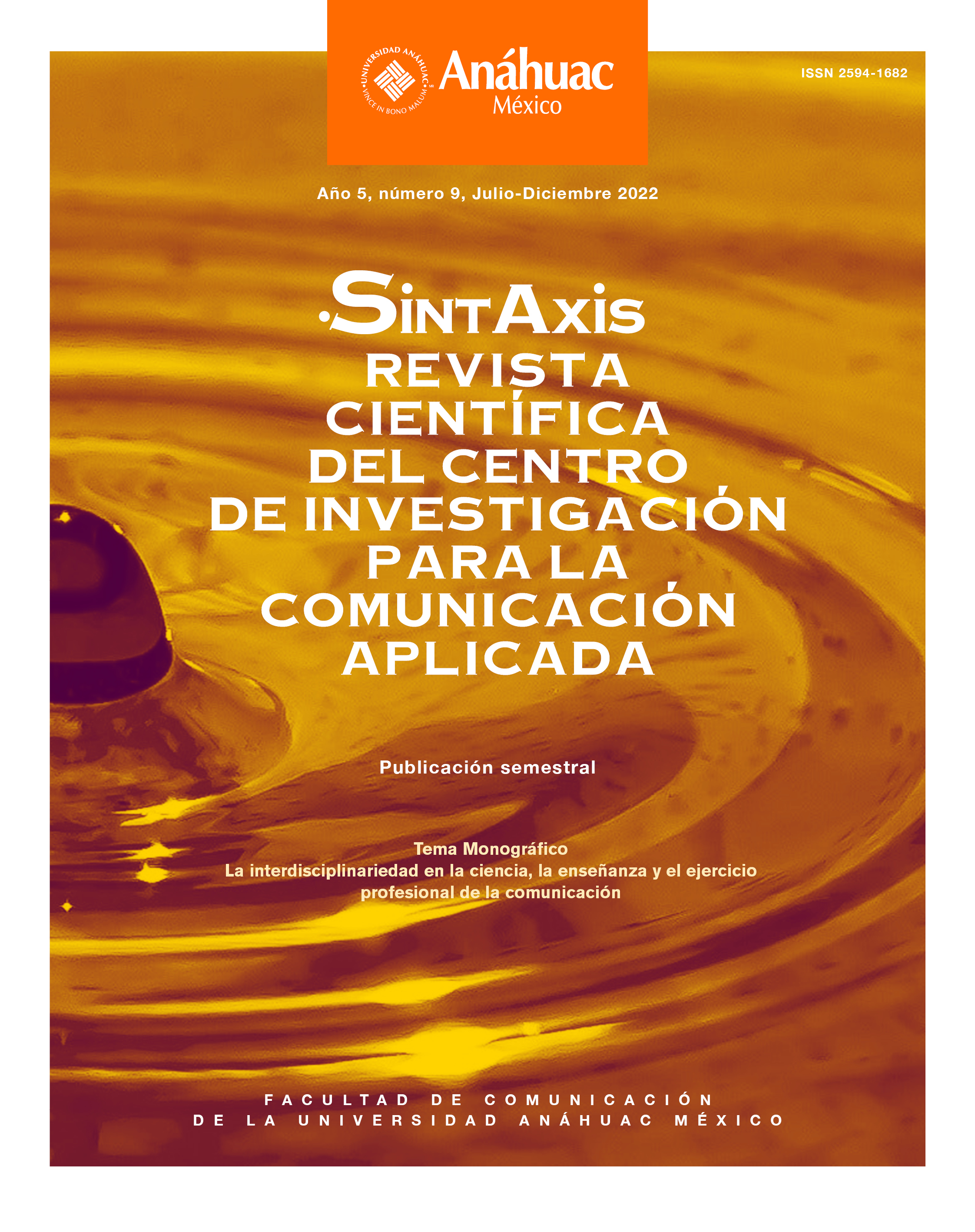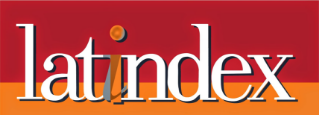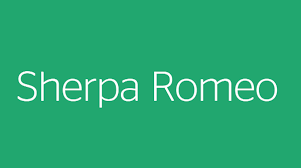Responsabilizarse de los mensajes en salud: la comunicación productora de sentido y de toma de decisiones
DOI:
https://doi.org/10.36105/stx.2022n9.05Palabras clave:
ética de la comunicación, transdisciplina, salud, responsabilidad, informaciónResumen
El México pospandémico determina un contexto inédito que, al ser analizado en sí mismo, permitirá establecer políticas y proyectos sociales para el desarrollo del país en materia de salud. La comunicación como productora de sentido es el enfoque comunicacional latinoamericano
que sirve de marco teórico para este trabajo por reconocer la influencia de la comunicación en la toma de decisiones en materia de salud. El objetivo del presente artículo es el de identificar el impacto de los medios de comunicación en la forma de transmitir la verdad en la toma de decisiones personales en materia de salud. Se analiza el caso del Sistema de Etiquetado Frontal de Alimentos y Bebidas de México para concluir que el mensaje que da el etiquetado de alimentos va más allá de recordar el alto contenido de sodio o el alto porcentaje calórico. El nuevo etiquetado llama la atención al tomador de decisiones sobre su elección cuando no es la más adecuada para su salud.
Descargas
Referencias
Basto-Abreu, A., Torres-Alvarez, R., Reyes-Sánchez, F., González-Morales, R., Canto-Osorio, F., Colchero, M. A., ... y Barrientos-Gutierrez, T. (2020). Predicting obesity reduction after implementing warning labels in Mexico: A modeling study. PLoS Medicine, 17(7). https://doi.org/10.1371/journal.pmed.1003221
Berrocal, A. I. (2004). La autonomía del individuo en el ámbito sanitario. El deber de información y el consentimiento informado como derechos del paciente en la nueva Ley 41/2002, 14 de noviembre. FORO. Revista de Ciencias Jurídicas y Sociales, 227-298. https://revistas.ucm.es/index.php/FORO/article/view/FORO0404220227A
Berg, S. H., O’Hara, J. K., Shortt, M. T., Thune, H., Brønnick, K. K., Lungu, D. A., Roislien, J., y Wiig, S. (2021). Health authorities’ health risk communication with the public during pandemics: a rapid scoping review. bmc Public Health, 21(1), 1401. https://doi.org/10.1186/s12889-021-11468-3
Bórquez, B., Luengo-Charath, M. X., Anguita, V., Bascuñán, M. L., Pacheco, I. M., & Vacarezza, R. (2020). Uso y difusión responsable de la información en pandemia: un imperativo ético. Revista chilena de pediatría, 91(5), 794-799. https://doi.org/10.32641/rchped.vi91i5.2420
Campos, S., Doxey, J., & Hammond, D. (2011). Nutrition labels on pre-packaged foods: a systematic review. Public health nutrition, 14(8), 1496–1506. https://doi.org/10.1017/S1368980010003290
Cesar, F., Moraes, K. L., Brasil, V. V., Alves, A. G., Barbosa, M. A., & Oliveira, L. (2022). Professional Responsiveness to Health Literacy: A Scoping Review. Health literacy research and practice, 6(2), e96-e103. https://doi.org/10.3928/24748307-20220418-02
Dahlgren, G., Whitehead, M. (1991). Policies and strategies to promote social equity in health. Institute for Futures Studies.
Diario Oficial de la Federación (2020). NOM 051-SCFI/SSA-2010. https://www.dof.gob.mx/nota_detalle.php?codigo=5590668&fecha=27/03/2020
Díaz, S. (2022). Lenguaje no binario en publicaciones médicas académicas, Voces de las Universitarias para los nuevos tiempos. Testimonios sobre género y pospandemia, Coordinación para la Igualdad de Género. Universidad Nacional Autónoma de México, (actualmente en imprenta, pendiente DOI).
Ellahham, S. (2021). Communication in Health Care: Impact of Language and Accent on Health Care Safety, Quality, and Patient Experience. American journal of medical quality: the official journal of the American College of Medical Quality, 36(5), 355-364. https://doi.org/10.1097/01.JMQ.0000735476.37189.90
Epstein, R. M., y Street Jr, R. L. (2007). Patient-centered communication in cancer care: promoting healing and reducing suffering. National Cancer Institute, U.S. Department of Health and Human Services. https://cancercontrol.cancer.gov/sites/default/files/2020-06/pcc_monograph.pdf
Fábregas, S. M., Rodríguez, P., y Ferrer, J. (1998). Contribución de la comunicación de salud a la adopción del consentimiento informado. Cuadernos de Bioética, 4, 731-43.
García, J. (2020). López Obrador pide “no exagerar” sobre el coronavirus porque afecta a la economía. El país. https://elpais.com/sociedad/2020-03-21/lopez-obrador-pide-no-exagerar-sobre-el-coronavirus-porque-afecta-a-la-economia.html
Illingworth, S., y Prokop, A. (2017). Science communication in the field of fundamental biomedical research. Seminars in cell and developmental biology, 70, 1-9. https://doi.org/10.1016/j.semcdb.2017.08.017
Instituto Nacional de Salud Pública. (2022). Sistema de etiquetado frontal de alimentos y bebidas para México. https://www.insp.mx/avisos/4771-etiquetado-alimentos-bebidas-gda.html
Iyengar, S., y Massey, D. S. (2019). Scientific communication in a post-truth society. Proceedings of the National Academy of Sciences of the United States of America, 116(16), 7656-7661. https://doi.org/10.1073/pnas.1805868115
Kaufer-Horwitz, M., Tolentino-Mayo, L., Jáuregui, A., Sánchez-Bazán, K., Bourges, H., Martínez, S., y Barquera, S. (2018). Sistema de etiquetado frontal de alimentos y bebidas para México: una estrategia para la toma de decisiones saludables. Salud Pública de México, 60(4), 479-486. https://doi.org/10.21149/9615
Khattak, S. (2022). Navigating the Post-Truth Age: What, How, and What Now? trt World. https://www.trtworld.com/opinion/navigating-the-post-truth-age-what-how-and-what-now-53414
Laszlo, J. (2021). Communicating communication. British Dental Journal, 231(12), 725-726. https://doi.org/10.1038/s41415-021-3784-3
Lenk, H. (2006). What is Responsibility? Philosophy Now. https://philosophynow.org/issues/56/What_is_Responsibility
McKay, A. (2021). Don’t Look Up [cinta cinematográfica]. Bluegrass Films.
Monge, Y. (2018). Trump sobre el informe del cambio climático: “No me lo creo”. El país. https://elpais.com/internacional/2018/11/27/estados_unidos/1543283242_634443.html
Papageorghiou A. Insights into determinants of health. bjog: An International Journal of Obstetrics and Gynaecology. 2020, 127(4), 431-432. https://doi.org/10.1111/1471-0528.16090
Platón. (2007). Diálogos II. Gredos.
Rawls, J. (2020). A theory of justice. Harvard University Press.
Reguillo, R. (2000). Anclajes y mediaciones del sentido. Lo subjetivo y el orden del discurso: un debate cualitativo. Revista Universidad de Guadalajara, 17.
Reynoso, I. J. C., Estrada, R. O., Paredes, L. V., Sancho, L., y Villaverde, I. (2021). Actualización de la Norma Oficial Mexicana NOM-051-SCFI/SSA1 en la Industria de Alimentos y Bebidas. Journal Boliviano de Ciencias, 17, 6-18. https://doi.org/10.52428/20758944.v17iEspecial.1
Rice, L., y Sara, R. (2018). Updating the determinants of health model in the Information Age. Health Promot Int. 2019, 34(6), 1241-9. https://doi.org/10.1093/heapro/day064
Schiller, F., y Romano, V. (1981). Cartas sobre la educación estética del hombre. Aguilar.
Scotto, S., y Pérez, D. (2020). Relatividad lingüística, gramáticas de género y lenguaje inclusivo: algunas consideraciones. Análisis Filosófico, 40(1), 5-39. https://doi.org/10.36446/af.2020.318
Sen, A. (1999). Development as Freedom. Knopf, 5.
Palencia, M. A. (2014). Entrevista Michel Foucault por Gilles Deleuze. Revista Filosofía UIS, 13(1), 283-291. https://revistas.uis.edu.co/index.php/revistafilosofiauis/article/view/4415
Torrico, E. R. (2019). La comunicación desde los enfoques latinoamericanos. Comunicación, (41), 11-21. https://doi.org/10.18566/comunica.n41.a02
UNESCO. (2006) Declaración de Bioética y Derechos Humanos. https://unesdoc.unesco.org/ark:/48223/pf0000146180_spa
Yacuzzi, E. (2005). El estudio de caso como metodología de investigación: teoría, mecanismos causales, validación. cema Working papers: Serie Documentos de Trabajo, (296).
Publicado
Número
Sección
Licencia
Derechos de autor 2022 Sofía Teresa Díaz Torres

Esta obra está bajo una licencia internacional Creative Commons Atribución-NoComercial-SinDerivadas 4.0.
Sintaxis. Revista científica del Centro de Investigación para la Comunicación Aplicada© se distribuye bajo una Licencia Creative Commons Atribución-NoComercial-SinDerivadas 4.0 Internacional.
El autor conserva los derechos patrimoniales sin restricciones y garantiza a la revista el derecho de ser la primera publicación del trabajo. El autor es libre de publicar en cualquier otro medio su artículo, como un repositorio institucional.

















